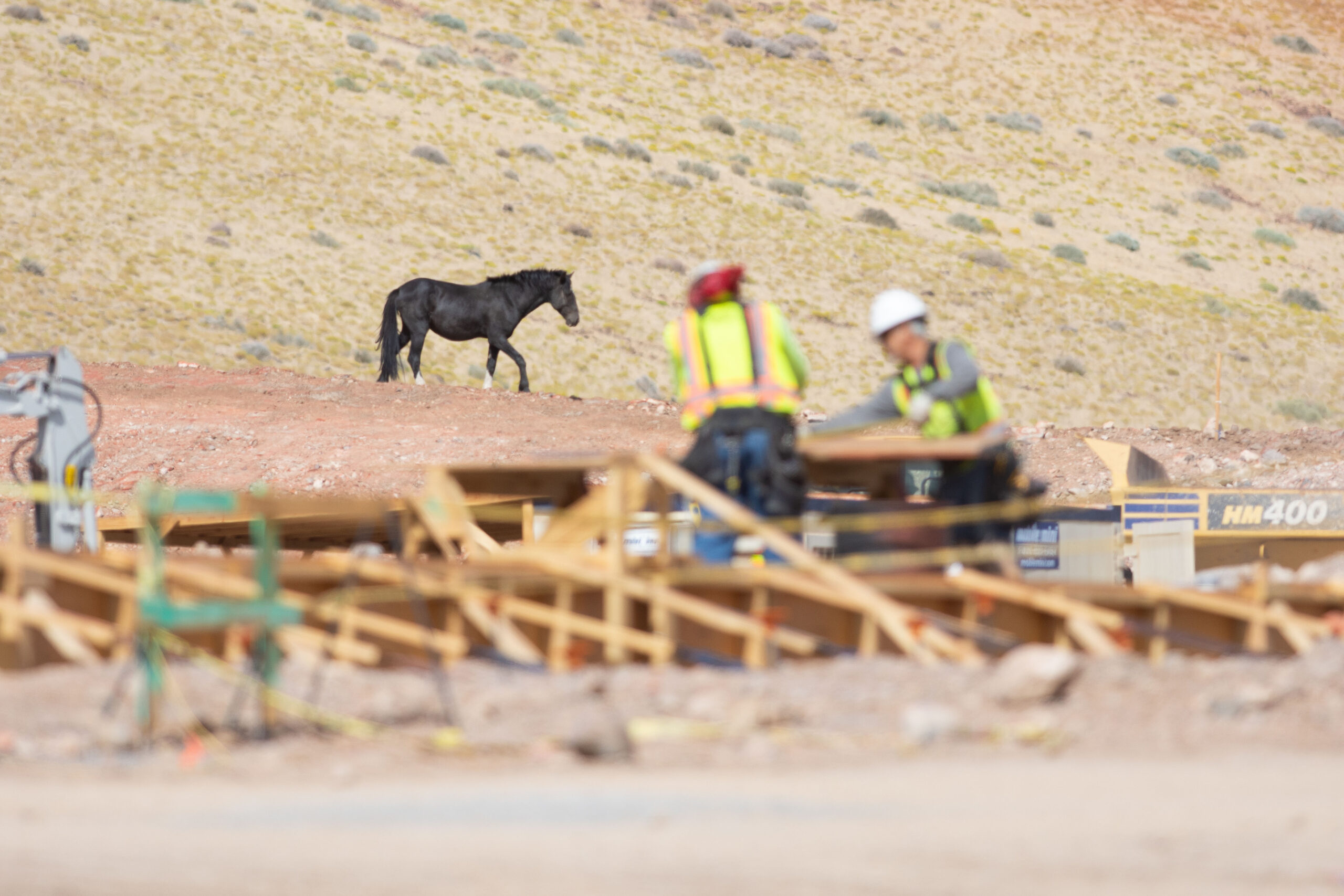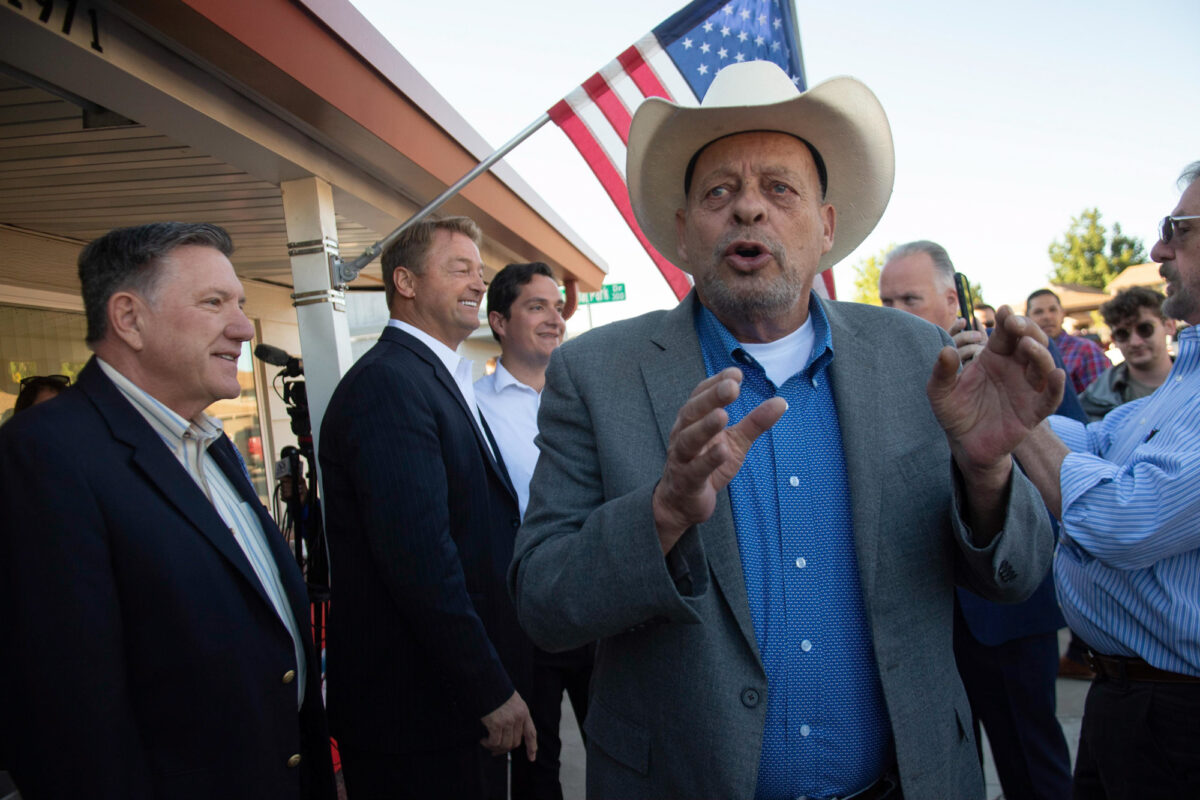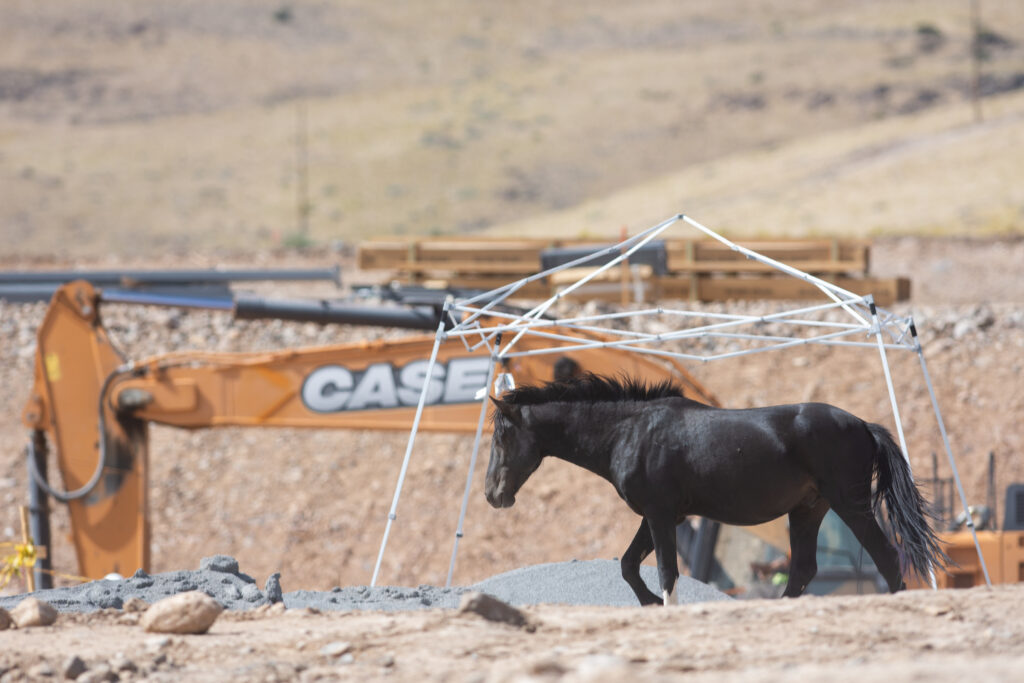Indy Q&A: Agriculture Director J.J. Goicoechea discusses Virginia Range horses

Good morning, and welcome to the Indy Environment newsletter. I'm Amy Alonzo, the environment reporter for The Indy.
A few years ago, my aunt offered to host a family holiday gathering with one caveat — nobody could bring up politics at the dinner table.
In Nevada, wild horses, and how they should be managed, is an equally polarizing topic. There’s no question they are beloved, but an information gap persists between land and wildlife managers and the public, as a Utah State University Extension study recently showed.
An understanding of the animals and their management by not just land managers and horse advocates, but by the broader public, is critical to the health and well-being of the state’s rangeland — and its residents. The horses’ impacts extend well beyond the sagebrush, affecting issues including public safety — there are approximately 35 horse-related crashes in Nevada each year.
As always, we want to hear from readers. Let us know what you’re seeing on the ground and how policies are affecting you. Email tips to me at [email protected].
To get this newsletter in your inbox, subscribe here.


At the edge of Reno, the Virginia Range rolls east toward Storey and Lyon counties, a sea of rolling arid mountains. Industrial and residential developments encroach on the range — Tahoe-Reno Industrial Center, the world’s largest industrial center, slices through the middle of it, and on its southern and western edges, housing developments creep further and further into the mountains.
Intermixed with those developments are feral horses — thousands of them.
Despite fertility control measures, there are more than 3,000 wild horses on the Virginia Range, more than seven times the population when the state adopted its management program for the range 25 years ago.
Now, the state is looking to a longtime horseman and former lawmaker to help rein in the numbers.
The Nevada Department of Agriculture (NDA) has tapped former state Assemblyman Jim Wheeler (R-Minden), who served from 2013 to 2021, to oversee the range’s feral horse management program.
Wheeler faces a challenging situation.
Spanning roughly 284,000 acres, the Virginia Range comprises land belonging to the Bureau of Land Management (BLM), Bureau of Reclamation, Bureau of Indian Affairs, U.S. Forest Service, Nevada State Parks and private landowners. More than two thirds of the range is privately owned.
Because so much of the range is privately held, the BLM — the agency mandated by Congress in 1971 to manage and protect the West’s wild horses and burros in their native ranges — determined it was not the best agency to oversee the Virginia Range equines. In the mid-1980s, the BLM held several roundups on the Virginia Range, declared the area “wild horse free,” and management of the range shifted to the state.
Despite the BLM’s declaration, some horses remained — and reproduced.
Now, the state oversees thousands of horses.
In 2007, the NDA and the Virginia Range Wildlife Protection Association agreed to a carrying capacity of 550 horses for the range — a little over one horse per square mile — despite recommendations from range scientists that the number should be closer to 200 or 300 head to restore rangeland health.
Since 2019, the department has consistently contracted with American Wild Horse Campaign (AWHC) to provide fertility control measures to bring down the population, and it just extended the contract for another five years. From May 2022 to April 2023, the fourth year of the fertility program, more than 1,200 mares were treated with fertility control. Population growth has slowed but hasn’t stopped, and rangeland health continues to decline as livestock, feral horses and wildlife compete on a shrinking range with finite resources.
But the department has never had a manager to serve as a liaison with AWHC and other groups that manage and care for the range’s horses.
That’s why Wheeler was hired.
Wheeler, 70, grew up on a small Southern California ranch and as a teenager spent his summers working on cattle ranches. Prior to serving in the Legislature, he spent several years raising quarter horses
He has knowledge of the Virginia Range, diversionary feeding and has a working relationship with AWHC and other groups the state contracts with for horse management, according to Nevada Department of Agriculture Director J.J. Goicoechea. Wheeler was also instrumental in amending legislation during the 2013 session that, in part, created a penalty for citizens unlawfully feeding wild horses. (Previously, those caught feeding wild horses were verbally warned to stop; under AB264, a second violation is a gross misdemeanor.)
Wheeler told The Nevada Independent that he was instrumental in getting the cooperative agreements in place between the state and AWHC, and that “I know all the mechanics of it. And I know horses. When I saw the job, I thought it might be a good fit for me.”
Wheeler will earn roughly $98,000 over the 15 months of the grant-funded position. The Nevada Department of Agriculture would not share how many people applied for the job.
Goicoechea spoke with The Indy about the horses, the range and his hopes for what Wheeler can accomplish in his new position. Below is the conversation, condensed for length and clarity.
Jim Wheeler was recently hired as project manager to oversee the Virginia Range Estray Program (VRE). What prompted the creation of this position? It became apparent we needed to do something different with the VRE. We received money from the U.S. Department of Agriculture for this 15-month, contract position. He will oversee the horses, the contracts and will be meeting with the advocate groups and providing them with a more consistent conduit back to the department. We wanted a position they could go directly to and have boots on the ground.
What sort of projects will Wheeler be working on? We know we will have to put additional fencing in some locations. South Reno around Damonte, Carson City — we see horses in those areas despite developers fencing out. We’re working with BLM to see what they have for fences that have kind of fallen into disrepair. This manager is going to see those projects get done.
What is your overall assessment of the Virginia Range’s horses?
The estray horses (defined by Nevada statute as any formerly domesticated livestock roaming on public or private land whose owner is unknown) in the Virginia Range are looking fairly well. We’re seeing some of the older horses start to fall off now as the vegetation dries up. It will depend on how quick the winter comes and how severe it is.
I’m seeing a lot of horse signs around Washoe Lake State Park. A lot of horses have moved into that state park, in part, because that park hasn’t maintained their fencing because they didn’t have funding. I’m hopeful we can work on that pretty quick.
What is the current target population of horses for the Virginia Range? Around 500 head. We have seen some increased pressure from development and urban sprawl. We did a census in March of 2022, and there were 3,567 horses on the Virginia Range. We know there’s probably a few more today.
Horses are moving into Fernley … They have to have somewhere to go. They are crowding themselves population wise, and we’re building.
How are fertility control measures working?
We’re very supportive of the fertility control program. In some areas it’s working well, but we’re just not seeing attrition and we’re just kind of holding around the 4,000 head mark. In 2018, we did a census and there were 2,951 horses. We increased by a little over 1,600 horses in four years. We have to do more.
When I mentioned attrition, we know we have foals on the ground. If a horse’s life expectancy is 20 years, we don’t have 20 years to wait for the natural horse attrition rate to get down. We need more on-ground evaluation, more fencing, more darting. We need funding from somewhere.
How is the VRE program funded?
Fees from livestock operators fund the feral estray program. It just depends on the year. That’s why it’s so critical we have our partnership with Wild Horse Connection and American Wild Horse Campaign and this new manager position. We rely a lot on those partnerships, or this program would not exist.
What are the long-term goals for the VRE program?
Our first focus is public safety. Our second focus is, we owe it to wildlife, we owe it to the horses, and we owe it to the ecosystem. Right now, we’re focusing on public safety. As we get through those two things, we’ll have the conversation if we can relocate some of these horses to private hands instead of just staying on the range. My long-term goal would be to reinvigorate the program where we can put more (horses) into a good home through a relocation process. I’m hoping this manager position will help us focus a little more on our key areas.

Here’s what else I’m watching this week:
Carbon capturing is a key component of the federal climate strategy. It could be allowed on national forest land.
Clean energy projects are backlogging due to a lack of transmission capability, according to Grist.
An eastern Nevada tree-removal project that drew objections from conservationists as a “scorched earth plan” was approved by a judge, writes Jeniffer Solis at Nevada Current.
In July, I wrote about the lack of a solar energy plan in Nevada compared with California’s Desert Renewable Energy Conservation Plan (DRECP) and Arizona’s Restoration Design Energy Project. The first solar project under the DRECP is now operational, according to the Desert Sun.
Excellent reporting by ProPublica and The Desert Sun looking at use of Colorado River water by some of Southern California’s largest agricultural producers.
My co-worker Daniel Rothberg explores proposals to remove dams that provide energy to some rural Nevada power companies.
